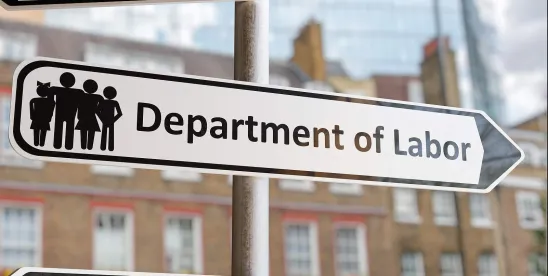On June 5, 2025, Secretary of Labor Lori Chavez-DeRemer testified before the House Committee on Education and the Workforce regarding the Trump administration’s proposed fiscal year 2026 budget. The proposed budget includes significant funding reductions for the U.S. Department of Labor (DOL), specifically targeting the Occupational Safety and Health Administration (OSHA) and the Mine Safety and Health Administration (MSHA).
The proposal seeks to cut OSHA’s funding by approximately $50 million and reduce its full-time workforce by 223 positions, shifting the agency’s focus toward increased compliance assistance rather than direct enforcement. The enforcement budget for OSHA would be reduced by about $23.7 million compared to the previous year. Broader DOL cuts are also proposed, with an emphasis on consolidating workforce programs and reducing regulatory burdens.
Quick Hits
- Secretary Chavez-DeRemer testified before the House Committee on Education and the Workforce on June 5, 2025, about the Trump administration’s proposed 2026 budget cuts for the DOL, including significant reductions for OSHA and MSHA.
- The proposed budget aims to cut OSHA’s funding by $50 million and reduce its workforce by 223 positions, shifting focus to compliance assistance over direct enforcement.
- Despite budget cuts, Secretary Chavez-DeRemer emphasized that the DOL would maintain its enforcement capacity through modernization, technology, and streamlined processes.
Secretary Chavez-DeRemer asserted that, despite these budget and staffing cuts, the DOL could maintain its workplace safety and health enforcement capacity. She emphasized the need to modernize and streamline agency operations, arguing that more funding is not always the solution to enforcement challenges. Secretary Chavez-DeRemer stated that the DOL would continue to meet its statutory obligations and that the department would always investigate complaints and enforce the law as required.
Her approach centers on leveraging technology, data analytics, and improved internal procedures to make OSHA more agile and effective. Secretary Chavez-DeRemer has stated that the DOL, including OSHA, must “modernize and streamline” its processes. She contends that this approach will enable the agency to do more with less, focusing on updating systems, leveraging technology, and improving internal procedures. The goal is to make OSHA more agile and effective, even as resources are trimmed.
Streamlining, in Secretary Chavez-DeRemer’s view, means reducing bureaucratic hurdles and eliminating inefficiencies that slow down enforcement and compliance activities. She has pointed to the need for the agency to focus on its core statutory responsibilities and to prioritize activities that have the greatest impact on worker safety. By cutting unnecessary red tape and consolidating overlapping functions, OSHA can direct its limited resources to the most critical areas.
Examples of modernization and streamlining offered by Secretary Chavez-DeRemer included:
- Targeted inspections: Using data analytics to identify and focus on the most hazardous workplaces, rather than spreading resources thinly across all employers.
- Digital tools: Implementing new technologies for case management, reporting, and communication to speed up investigations and reduce administrative burdens.
- Workforce flexibility: Cross-training inspectors and creating multidisciplinary teams to maximize the expertise and adaptability of the remaining staff.
- Regulatory reform: Reviewing and revising existing regulations to eliminate outdated or redundant requirements, making compliance simpler for both OSHA and employers.
Unanswered in her testimony was whether employers can expect OSHA to engage in greater use of technology during inspections, such as the so-called smart glasses that are utilized during some inspections. While it can be argued that these smart glasses can create efficiencies consistent with the secretary’s stated goals, many employers object to the use of these devices, as it is difficult, if not impossible, to limit the inclusion of confidential or proprietary information in the inspection and its corresponding inspection file. This can create challenges for employers facing Freedom of Information Act (FOIA) requests for OSHA’s files.
A key element of the proposed strategy is a shift from enforcement-heavy tactics to a greater emphasis on compliance assistance. Secretary Chavez-DeRemer believes that helping employers understand and meet their obligations through education, outreach, and technical support can be as effective as traditional enforcement in promoting workplace safety. This approach is intended to encourage voluntary compliance, reduce the need for resource-intensive inspections, and foster a more collaborative relationship between OSHA and employers. There is no reason to believe that fatality and catastrophe inspections will not continue at or above the historic rates for those inspections.
The reduction in funding and staffing has raised concerns among lawmakers, particularly regarding OSHA’s already limited resources. It was noted that, with current staffing, OSHA can only inspect every workplace in the United States once every 185 years, though, like most statistics, reasonable minds might argue that that interval is too short by several decades, depending on the statistics used. Critics, especially Democrats on the committee, argued that the cuts would further hinder OSHA’s ability to enforce safety standards and respond to violations, including child labor cases. Secretary Chavez-DeRemer responded that the department would focus on efficiency and compliance assistance, but would not compromise on statutory enforcement responsibilities.
For MSHA, the testimony addressed the potential closure of offices, with Secretary Chavez-DeRemer clarifying that decisions to terminate leases were made prior to her confirmation. She indicated efforts were underway to keep essential MSHA offices open, especially in regions with significant mining activity, to ensure statutory obligations for miner safety are met. Lawmakers expressed concern about the impact of office closures on miner safety and MSHA’s ability to conduct necessary inspections and enforcement.
Secretary Chavez-DeRemer’s testimony and approach emphasize a commitment to maintaining OSHA and MSHA enforcement capabilities through modernization, efficiency, and a shift toward compliance assistance, even as the agencies face significant budget and staffing cuts. While she contends that these strategies will allow the agencies to fulfill their statutory responsibilities, lawmakers and critics remain skeptical, warning that the reductions could undermine the agencies’ ability to protect workers and enforce safety standards effectively. Employers can reasonably expect that the number of inspections they face, other than fatality and catastrophe inspections, could drop if this budget is adopted, but if MSHA and OSHA do develop more modern and streamlined processes, those numbers might not drop dramatically.



 />i
/>i
